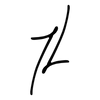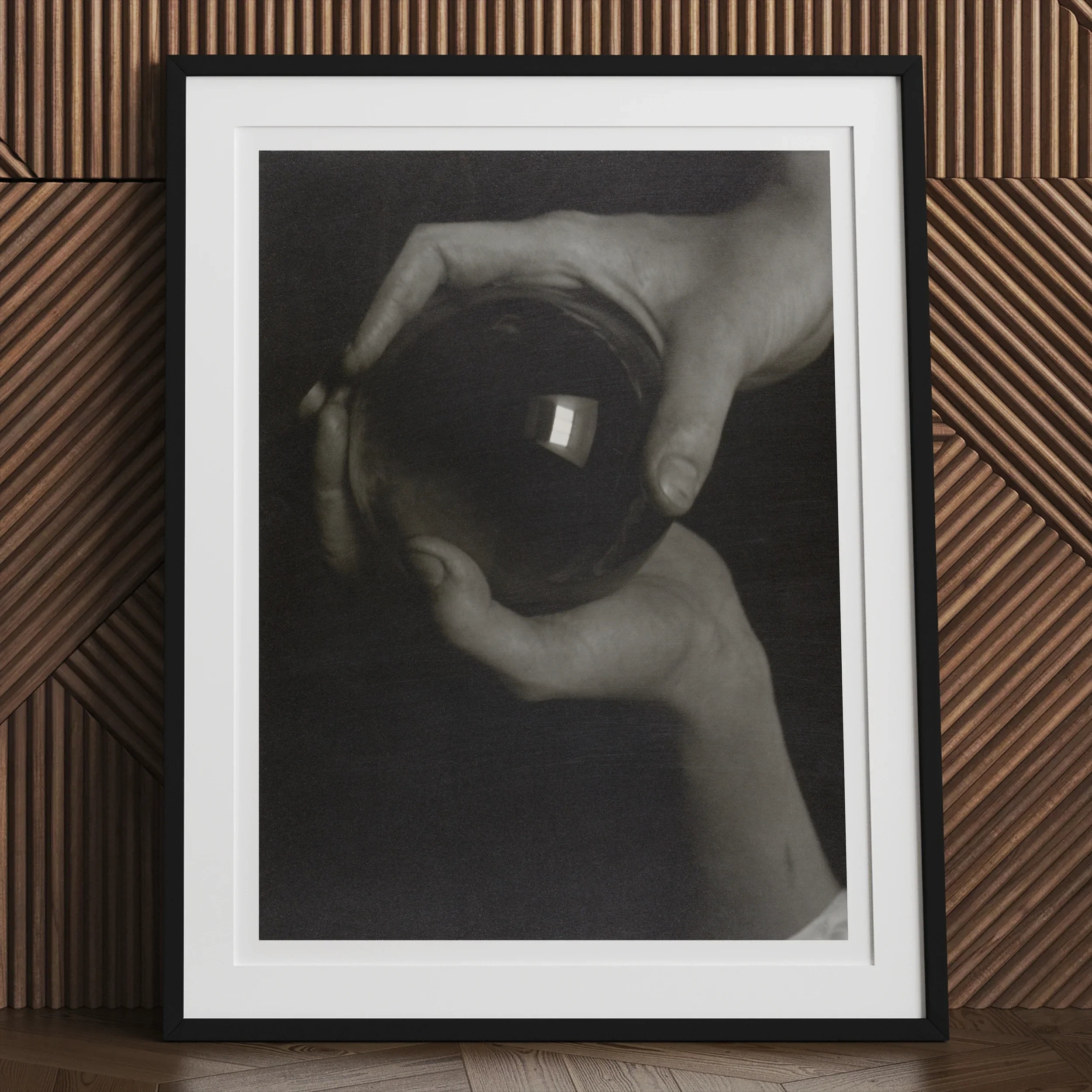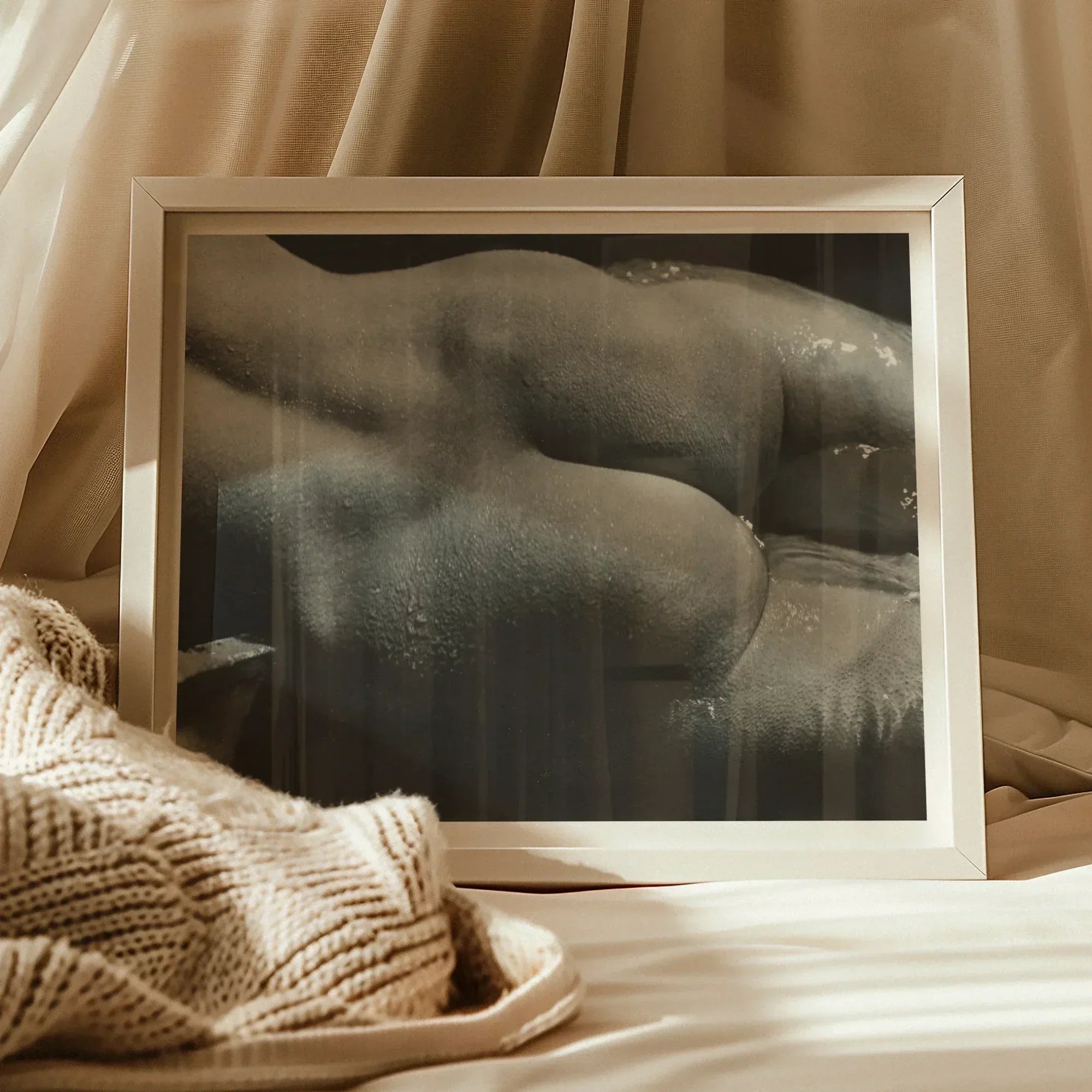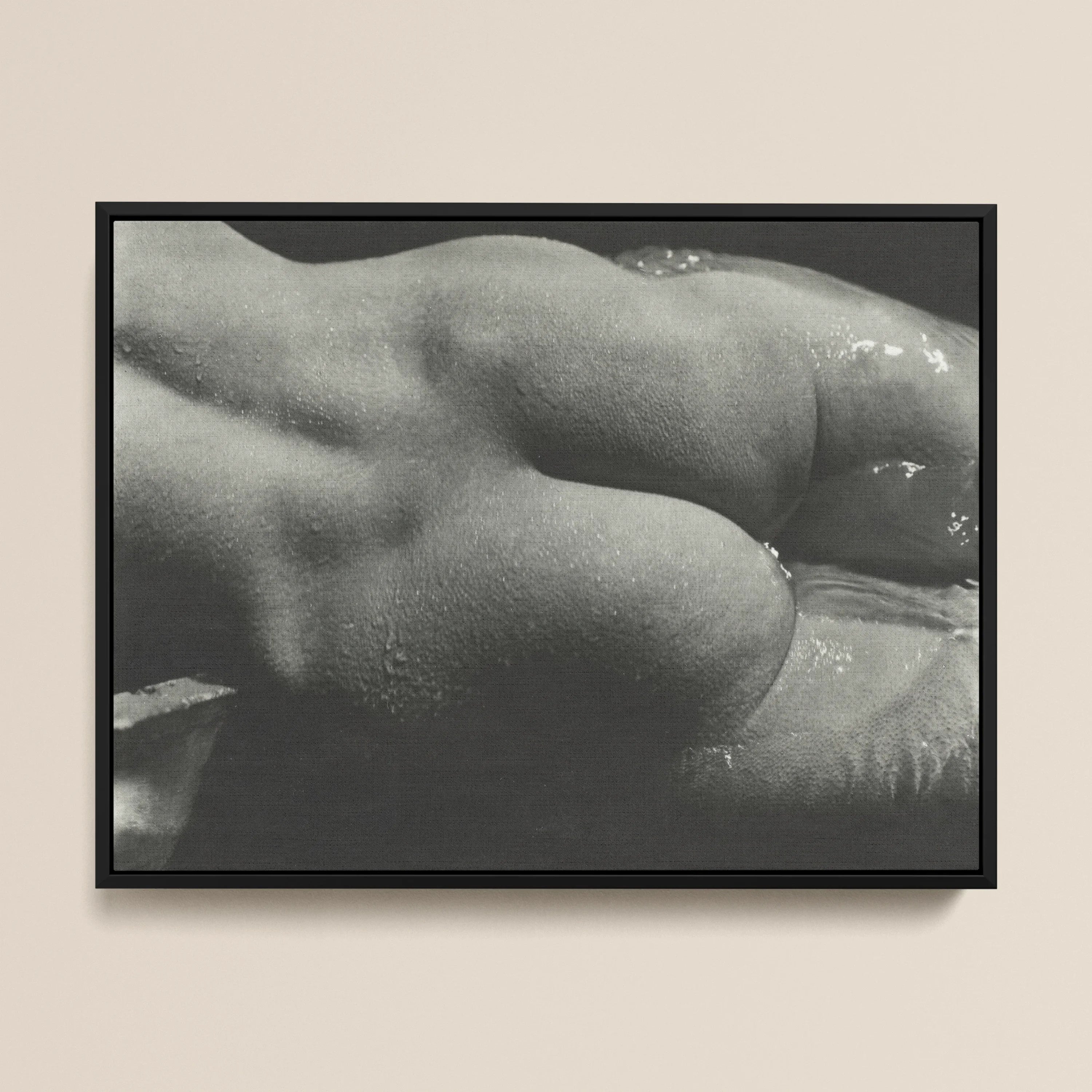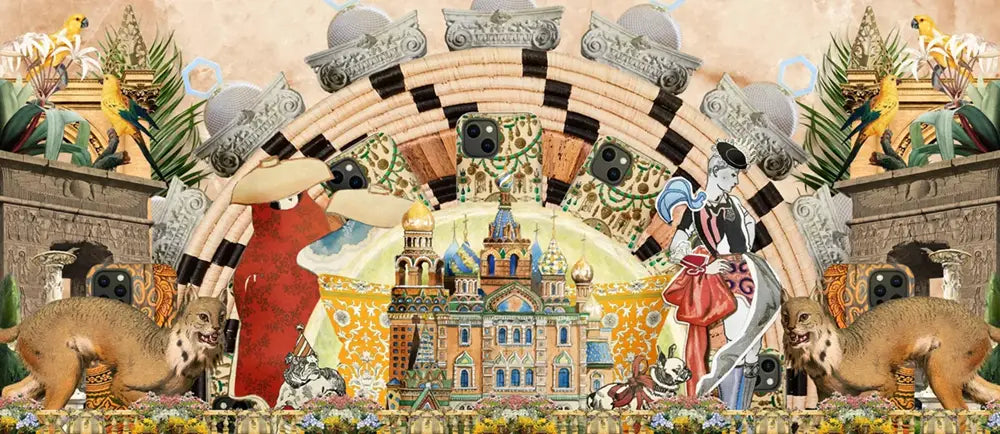History often footnotes its visionaries as technicians. Alfred Stieglitz refused that fate. His camera did not freeze the world; it incanted it. Across six decades, he turned silver nitrate into confession, glass plates into weather reports from the soul.
He built movements not from manifestos but from emulsions. Each print a declaration that photography could rival brush or chisel in its ability to uncover, shimmer, and speak. From snowbound avenues to flesh-toned negatives, from vapor-thick portraits to cloudscapes that vibrate with metaphysical weight, Stieglitz collapsed the boundary between image and inner life.
He was not merely present at the birth of modernism—he midwifed it, then receded into the darkroom to prove his thesis in tone and grain. So, this is not the story of a man who took pictures. This is the chronicle of a force who transfigured them—until the photograph could ache, until even the sky was rendered intimate.
Key Takeaways
- Photography as Alchemy, Not Apparatus: For Alfred Stieglitz, the camera was never a device—it was a metaphysical engine. Revealing photography as a medium of invocation, not replication.
- From Atmosphere to Abstraction, Without Losing Intimacy: Across decades, Stieglitz moved from symbolist city haze to solarized intimacy to cloud-borne abstraction—refusing detachment even in its most radical formal shifts.
- Print Surface as Emotional Topography: Stieglitz used photographic materials like a composer wields tone: platinum for minute study, palladium for sensual expanse, solarization for ecstatic accident.
- Clouds as Portraits, Portraits as Weather: With the Equivalents, Stieglitz reversed the photographic lens onto inner life. And with his Lake George portraits he turned gesture into climate and intimacy into terrain.
- Modernism's Midwife—and Its Photographic Rebuttal: While championing Cubism and abstraction at 291, Stieglitz was simultaneously crafting a photographic modernism all his own.
 Alfred Stieglitz, The Terminal (ca. 1893)
Alfred Stieglitz, The Terminal (ca. 1893)
Symbolist and Pictorialist Beginnings
He wandered Manhattan like a revenant from Munich’s salons, tripod in tow, as if the snow itself might whisper secrets to glass. Alfred Stieglitz, still lacquered with European precision and romantic disenchantment, had returned to America in 1890 with the camera as oracle—not stenographer.
He was incensed by the medium’s utilitarian confinement, its default alignment with the documentary and disposable. What he wanted was essence. What he wanted was what the Symbolists had found in oils and ink: mood as message, blur as boundary, beauty not as adornment but as incantation.
In those early photographs, the city dissolves. It’s not New York—it’s a pre-verbal architecture of yearning. Fifth Avenue, Winter (1896) is less a street scene than an emotional barometer: a lone figure steers a coach through snow-lashed void, while blizzarding whiteness gnaws at structure and shadow. The photograph pulses with absence, and the image’s chiaroscuro melt blurs horse from vapor, man from mission. “Three hours I waited,” Stieglitz later wrote. Not for the shot, but for the moment. The photograph is not captured—it’s summoned.
Stieglitz’s kinship with the Pictorialists—a coalition who treated photography as pigment and gesture—anchored these early ambitions. Where shutter clicks might have merely mapped the visible, these photographers favored vision’s edges: grainy reveries, luminous fogs, compositional homage to Whistler or Monet. To them, the photograph was a lyric stanza in silver. The image should be felt before it was understood.
By 1902, Stieglitz had transmuted his aesthetic allegiance into infrastructural action. He founded the Photo-Secession, an insurgent movement aimed at cleaving photography from the stiff lapels of amateurism. Its companion journal, Camera Work, became both scripture and salon—devoted to the medium’s elevation. Then in 1905, The Little Galleries of the Photo-Secession opened at 291 Fifth Avenue. A narrow sliver of space that would become a vortex for modernism’s American debut.
Still, even as 291 hung the stark geometries of Picasso and the fractured stillness of Cézanne, Stieglitz remained in dialogue with pictorialism’s atmospheric poetics. Gum-bichromate processes, photogravure textures, soft-focus invocations—all were tools not of clarity, but of interiority. His contemporaries labored over their prints like monks over vellum: emulsions treated like tinctures, compositions rehearsed like sonatas. From London’s Linked Ring to New York’s burgeoning camera clubs, photographers sought to prove that their images could bleed emotion like paint.
In this period, the camera ceased to be an eye and became a psyche. Composition was emotion in drag; each exposure, a wager that time itself might blur into something beautiful.
Techniques and Themes (circa 1890–1905): Stieglitz mastered exposures that defied mechanical predictability—night, snowfall, damp. The Terminal (1893), for example, stages chiaroscuro not as stylistic indulgence, but as existential dialect: figures engulfed by light’s vanishing edges. His prints echo Symbolist convictions—the notion that the world is never quite what it appears, and perhaps photography, at its highest, could prove it.
 Alfred Stieglitz, Georgia O’Keeffe—Hands and Thimble (ca. 1919)
Alfred Stieglitz, Georgia O’Keeffe—Hands and Thimble (ca. 1919)
Palladium Alchemy and Solarized Dreams
By the 1910s, Alfred Stieglitz had turned the darkroom into a devotional chamber. Gone was any pretense of objectivity; what remained was chemistry as conjuration. He was less a documentarian than a medium—summoning warmth and luminescence from emulsions and rare metals, bending time not through speed, but through tone. Where early work flirted with atmosphere, his middle period collapsed into it. Not content to capture the world, he sought to recompose its skin.
Central to this transmutation was his almost obsessive adoption of palladium printing—a metallurgic sibling to platinum, but with deeper tonal sorcery. Paul Strand, ever the technical whisperer, had urged him toward it. Palladium, Strand argued, offered a “finer tonal range,” a tactile intimacy denied to harsher silver-based prints. Stieglitz took the advice like sacrament. By 1918 he had begun crafting palladium images with the precision of a Renaissance metallurgist and the hunger of a mystic.
Printing process becomes liturgy. For O’Keeffe’s skin: palladium. For her fingers: platinum. Each choice calibrated to what the subject emanates, not just what the lens receives. Palladium carried the weight of intimacy—its deep tone suited to shadow and sculpture. Platinum offered texture without proclamation. In his hands, paper was not neutral ground but a charged field. Flesh became sculpture, shadow became script.
These were not portraits. They were apparitions rendered in brown-black breath: nudes swathed in velvet tone, still lifes that shimmered with molecular grace. Each print carried weight—not just visual, but moral. “The print lives,” he declared. “It is ART.” And for Stieglitz, that meant it satisfied a spiritual equation—texture + technique = truth.
When he gifted several such prints to the Museum of Fine Arts in Boston—an institution then virginal to photography—it wasn’t an offering. It was a challenge. These prints were no longer experiments. They were arguments. That flesh, grain, shadow could whisper as persuasively as oil on canvas.
Then came the accidents. Or rather, the revelations within them. Solarization, that rogue reversal of tones under scorching light, found its way into his process like lightning into cathedral glass. At Lake George, under the manic caress of noon sun, Stieglitz began orchestrating moments of visual combustion: halos flared around shoulders, silhouettes went ghost-white while shadows thickened into ink. These weren’t flaws. They were epiphanies. Paul Strand noted it best—Stieglitz had taken a defect and fashioned a doctrine.
The solarized images shimmer with something beyond control—like x-rays of desire, or memory pressed against glass. Figures emerge radiant, yet ungraspable. Light misbehaves. Texture dances. And in doing so, Stieglitz inverted photography’s premise: no longer about seeing, but about sensing what vision can’t fully contain.
These prints weren’t photographs. They were fingerprints of devotion.
Aesthetic Notes: In this era, material was emotion. Palladium became the register for flesh and shadow: warm, grave, glistening. Stieglitz reserved platinum paper for microcosmic studies—hands especially, where gesture substitutes for biography—and unfurled palladium for the body entire. He spoke of “lustrous highlights” not as visual footnotes, but as equivalents to inner climate. Skin became landscape; shadow became script.

1913 Armory Show of modern art in New York (©️ Bettmann/Corbis)
The Armory Show and Modernism
1913 did not announce itself gently. It broke through the American art world like a snapped nerve. The Armory Show arrived in New York packed with visual heresy—Braque’s fractured tables, Duchamp’s mechanical bodies, Matisse’s acidic riots of pigment. Yet within the sonic boom of European modernism, another kind of detonation was quietly unfolding at 291.
There, Alfred Stieglitz did not simply hang art. He orchestrated collisions. His gallery had already prefigured the Armory’s upheaval, introducing New York to Cézanne, Picasso, Brâncuși. While others discovered shock, he’d been cultivating it for years. And amid the Armory’s cacophony, he mounted his own counter-score: an exhibition of his own photographs. Not as contrast. As equal.
Marcel Duchamp would later recall the moment: Georgia O’Keeffe photographing, Stieglitz discoursing, abstraction thick in the air like ozone. The camera, for once, was not a witness—it was a participant. And Stieglitz, standing among oil titans, was no longer curator. He was rival.
But with notoriety came a kind of retreat. After the smoke of the Armory cleared, Stieglitz stepped back—not in resignation, but recalibration. The spectacle of modernism had proved its potency. Now he would prove that photography, handled with equal boldness, could rival it. “I will return to the medium itself,” he told confidants. Not with nostalgia, but with purpose sharpened by proximity to painting’s combustion.
A student writer would later note that the Armory marked “a climax of his support of modern art for the public,” after which he turned inward again—to the lens, to the print, to the chemistry of self. What had been a gallery war became a darkroom resurrection. His final issues of Camera Work flickered out by 1917. The rest of that decade he spent in silence—photographic, perhaps, but not passive.
The break with pictorialism was slow, but total. Gone were gum prints and fogged lenses. In their place: precision. Line. Fidelity of light. This wasn’t purism. It was rebellion in a sharper key. Modernism had changed the rules. Stieglitz responded by redrawing the field.
And in doing so, he unshackled photography from both painterly mimicry and parlor respectability. The lens became its own dialect—not a visual translation of other arts, but an autonomous grammar. By the early 1920s, photography no longer needed comparison to justify itself. It could simply speak.
Inflection Point: Stieglitz’s 1913 pivot is not a renunciation of modernism, but a radical absorption. He does not abandon abstraction—he internalizes it. His subsequent images don’t mimic cubism. They refract its ethic: collapse of surface, elevation of form, emotion through geometry. Even his silence is architectural. It structures his next act.
 Alfred Stieglitz, Portrait of Georgia O'Keeffe (ca. 1920)
Alfred Stieglitz, Portrait of Georgia O'Keeffe (ca. 1920)
Lake George: Spiritual Intimacy in Portraits
If New York was combustion, Lake George was distillation. By 1917, Alfred Stieglitz had begun what would become his long summer retreat into the Adirondack hinterland—a migration not away from modernism, but toward its marrow. The lake, inherited through family, became sanctuary and studio: part monastery, part crucible. “The lake is perhaps my oldest friend,” he wrote, and what he made there was not retreat—it was revelation.
The portraits from this era do not posture. They inhale. Especially those of Georgia O’Keeffe. She appears not as muse, but as axis: photographed over 300 times in just a few years, her presence blooms across silver nitrate like breath across glass. In Portrait of Georgia O’Keeffe (1920), she’s not staged; she’s submerged. Light slices her profile into ether and edge. Her silhouette and the surrounding forest seem to share the same pulse.
But it isn’t likeness Stieglitz pursues. It’s fusion. Hands, torsos, glimpses—each becomes a syllable in what he called A Demonstration of Portraiture, a polyphonic score where fragments replace full figures, and essence trumps anatomy. These aren’t just images of people. They’re studies in presence—how love lingers in gesture, how silence can be anatomical.
And the people weren’t alone. Lake George’s barns, trees, fields, even fogs became part of this intimate cosmology. A maple’s bark bore the striation of age and grace; a rotting fence the same poise as an elderly hand. The land was not backdrop—it was kin.
In one image, O’Keeffe stands near a wooden walkway spiraling skyward. In another, vines entangle a crumbling shed. Each frame reads like confession: that time is form, that love leaves weather behind. That the visible is never the whole story.
In these final images, the camera becomes clairvoyant—not predicting, but registering what cannot be said aloud. Whether sky, body, or bark, every image carries the same pulse: a belief that vision is not passive. It touches back.
Enduring Motif: Critic Lewis Mumford wrote that in Stieglitz’s portraits, the touch of a hand could evoke “the report of the hand… as it travels over the body of the beloved.” This wasn’t analogy. It was method. His portraits do not depict—they transmit. O’Keeffe called the Lake George suite “the most beautiful photographic document of our time.” But beauty was the side effect. The real work was transcription: of presence, of eroticism, of reverence, of decay.
 Alfred Stieglitz, Rainbow (1920)
Alfred Stieglitz, Rainbow (1920)
Sky Visions: The Equivalents
By the 1920s, Alfred Stieglitz had turned his lens skyward—not out of escapism, but confrontation. The camera, once his window onto people and places, now rotated ninety degrees to meet the clouds not as subjects, but interlocutors. These were not landscapes. They were provocations, executed in vapor and void. No horizon. No anchor. Just cloud and emulsion, the unmoored psyche mapped in monochrome.
He called them Equivalents, but they weren’t equivalents of anything you'd find in a textbook. They were tonal negotiations—between emotion and air, between cosmic scale and intimate gesture. A cumulus might stand for grief. A misted sprawl might echo exaltation. In Stieglitz’s hands, the sky became a keyboard, and his exposures struck chords across the visible octave.
This wasn’t visual metaphor. This was visual score. “Music: A Sequence of Ten Cloud Photographs” (1922) doesn’t describe a scene; it performs one. Each print registers the rhythm of breath, thought, memory—clouds as mnemonics for feeling. Absent earth or tree or building, these images operate in suspension. You do not look at them; you fall through them.
Technically, they confound. They ask for no subject recognition, no compositional anchor. A viewer cannot “place” them, because they are placeless. In that vertigo lies their revolution. By exhibiting these abstractions in 1925’s Seven Americans, Stieglitz delivered a blow to photographic literalism. This was not illustration. This was invocation.
Daniell Cornell would later position these works within the avant-garde’s broader explorations—Kandinsky’s synesthetic colors, Arp’s floating forms—but Stieglitz did not borrow. He mirrored. Where others painted abstraction, he summoned it from air. Where modernists turned inward, he looked up.
And still, these were not images of the sky. They were portraits. Of consciousness. Of belief. Of solitude. Critic Lewis Mumford likened them to the hand of a lover trailing across a beloved’s body: tactile in implication, if not in form. Even without figures, they spoke a language of closeness. Of encounter.
And so Stieglitz, ever the formalist, became a mystic—photographing the sky not to claim it, but to confess something to it. In the Equivalents, light is not illumination. It is language.
Key Equivalents: Equivalent (1923) carries the weight of gesture: a swell of white muscling through grey, rising with the silent insistence of a memory returning. Equivalent, 1929 is almost geological—its cloudform roils like magma mid-eruption. Neither describes a storm. Both describe a state of mind. The eye reads them as weather; the spirit receives them as truth.
Reading List
- Annear, Judy, ed. Alfred Stieglitz: The Lake George Years. Sydney: Art Gallery of New South Wales, 2010.
- Art Institute of Chicago. The Alfred Stieglitz Collection: Equivalents.
- Art Institute of Chicago. The Alfred Stieglitz Collection: Lake George.
- Art Institute of Chicago. The Alfred Stieglitz Collection: Little Galleries of the Photo-Secession/291.
- Art Institute of Chicago. The Alfred Stieglitz Collection: Pictorialism.
- Cornell, Daniell, ed. Alfred Stieglitz and the Equivalent: Reinventing the Nature of Photography. New Haven: Yale University Art Gallery, 1999.
- Greenough, Sarah. “A Great Day for Palladio: Alfred Stieglitz’s Palladium Photographs.” In Platinum and Palladium Photographs: Technical History, Connoisseurship, and Preservation, edited by Constance McCabe, 348–55. Washington, DC: American Institute for Conservation, 2017.
- International Center of Photography. Reflections in a Glass Eye: Works from the International Center of Photography Collection. Boston: Little, Brown, 1999.
- Wetzel, Bill. “Alfred Stieglitz & the Armory Show: Its Impact on His Life and His Work.” Undergraduate Review 2, no. 1 (1988). https://digitalcommons.iwu.edu/rev/vol2/iss1/8/.
